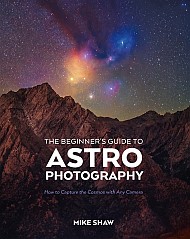Astronomy
Scientists Unearth Mysterious Meteorite Crater in China
Thousands of years ago, a space rock hit what is now China, leaving a bowl-shaped crater some 900 meters wide
Man With Tick-Borne Meat Allergy Dies after Eating Burger
Lone star tick bites are the most common cause of alpha-gal syndrome, which causes severe allergic reactions to red meat
Mapping Dark Matter
Machine Learning Discovers Quasars Acting as Lenses
Astronomers have used machine learning to discover seven new quasar lens systems, arrangements where a quasar's host galaxy bends light from a more distant galaxy behind it. The find more than doubles the number of known candidates and demonstrates how artificial intelligence can unearth astronomical needles in haystacks containing hundreds of thousands of objects. A team of researchers are training neural networks on synthetic data to revolutionising the search for these rare natural lenses.
China's 900 Metre Impact Crater Rewrites Recent History
Scientists have discovered a 900 metre wide impact crater in southern China, the largest modern meteorite scar on Earth. The Jinlin crater triples the size of the previous record holder and suggests that recent extraterrestrial impacts have been far more dramatic than anyone realised.
The Standard Cosmological Model Is The Simplest Model Of The Universe, But Not The Only One
A new study of supernovae suggests that the standard model of cosmology isn't quite right. If the data holds up, what other cosmological models might work better?
Cuts and scrapes may be slower to heal in redheads
Cuts and scrapes may be slower to heal in redheads
Sun Continues Celestial Fireworks Display with Powerful Solar Flare
The same region on the sun that’s responsible for this week’s stunning auroral display just erupted in another powerful solar flare early on Friday morning
New Glenn Rocket Launch Tests Jared Isaacman’s Commercial Space Vision for NASA
NASA’s presumptive next leader wants to outsource more of the space agency’s interplanetary science. The newly launched ESCAPADE mission to Mars offers a sanity check for those plans
Oldest ever RNA sample recovered from woolly mammoth
Oldest ever RNA sample recovered from woolly mammoth
Woolly Mammoth Unlocks Reveals the World’s Oldest RNA
RNA has been extracted from an ancient woolly mammoth, providing insight into its last moments on Earth
Stranded Chinese Astronauts Return to Earth, but Space Junk Threats Remain
The Shenzhou 20 spacecraft was too damaged to bring its crew home from China’s Tiangong space station. Those astronauts have now returned via the Shenzhou 21 craft, leaving its crew without a return ride until the nation sends a new spacecraft to the station
Mystery deepens as isolated galaxy forms stars with no obvious fuel
Mystery deepens as isolated galaxy forms stars with no obvious fuel
Have Astronomers Discovered the First Generation of Stars?
With the help of an intervening galaxy cluster, astronomers have found what might be the first generation of stars — but the jury's still out.
The post Have Astronomers Discovered the First Generation of Stars? appeared first on Sky & Telescope.
A solar prominence hovers over the Sun
The Sun is always mesmerising to watch, but Solar Orbiter captured a special treat on camera: a dark ‘prominence’ sticking out from the side of the Sun.
The dark-looking material is dense plasma (charged gas) trapped by the Sun's complex magnetic field. It looks dark because it is cooler than its surroundings, being around 10 000 °C compared to the surrounding million-degree plasma.
When viewed against the background of space, the hovering plasma is referred to as a prominence. When viewed against the Sun's surface, it is called a filament. (In this image you can see examples of both.)
Solar prominences and filaments extend for tens of thousands of kilometres, several times the diameter of Earth. They can last days or even months. This video shows one hour of footage, sped up to make movement more clearly visible.
Solar Orbiter recorded this video with its Extreme Ultraviolet Imager (EUI) instrument on 17 March 2025. At the time, the spacecraft was around 63 million km from the Sun, similar to planet Mercury.
Solar Orbiter is a space mission of international collaboration between ESA and NASA. The EUI instrument is led by the Royal Observatory of Belgium (ROB).
[Video description: Close-up video of the Sun, filling the left half of the view, its surface covered what looks like moving, glowing hairs accompanied by some short-lived bright arcs. Protruding to the right, in the centre of the video, is dark material that looks almost feathery, with thin streaks flowing both away from and towards the Sun.]
Miniature Binary Star System Hosts Three Earth-sized Exoplanets
A new discovery adds to the growing menagerie of exoplanets. These days, word of a new exoplanet discovery raises nary an eyebrow. To date, the current number of known exoplanets beyond our solar system stands at confirmed 6,148 worlds and counting. But a recent study out of the University of Liège in Belgium titled Two Warm Earth-sized Planets and an Earth-sized Candidate in the Binary System TOI-2267 shows just how strange these worlds can be.
Week in images: 10-14 November 2025
Week in images: 10-14 November 2025
Discover our week through the lens


